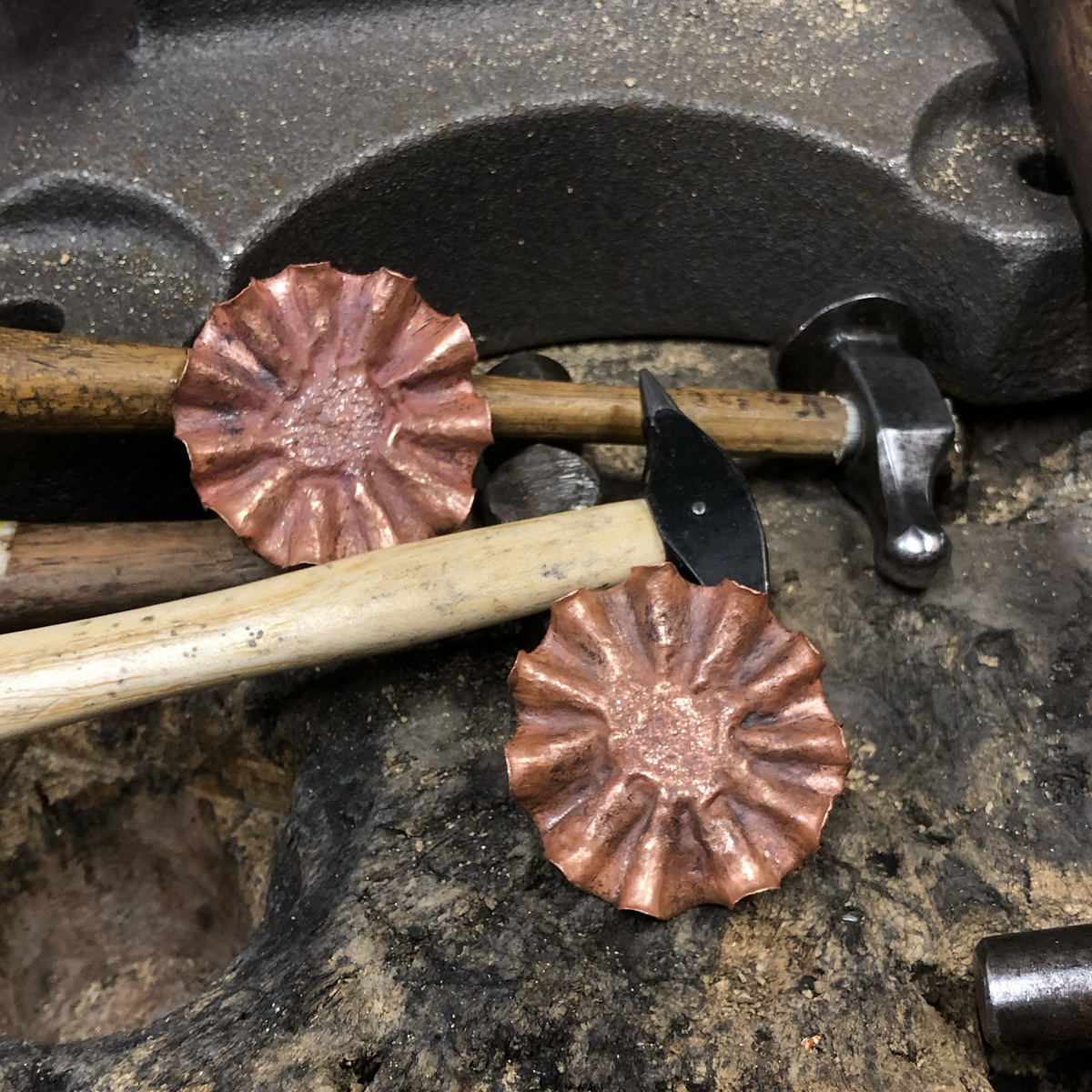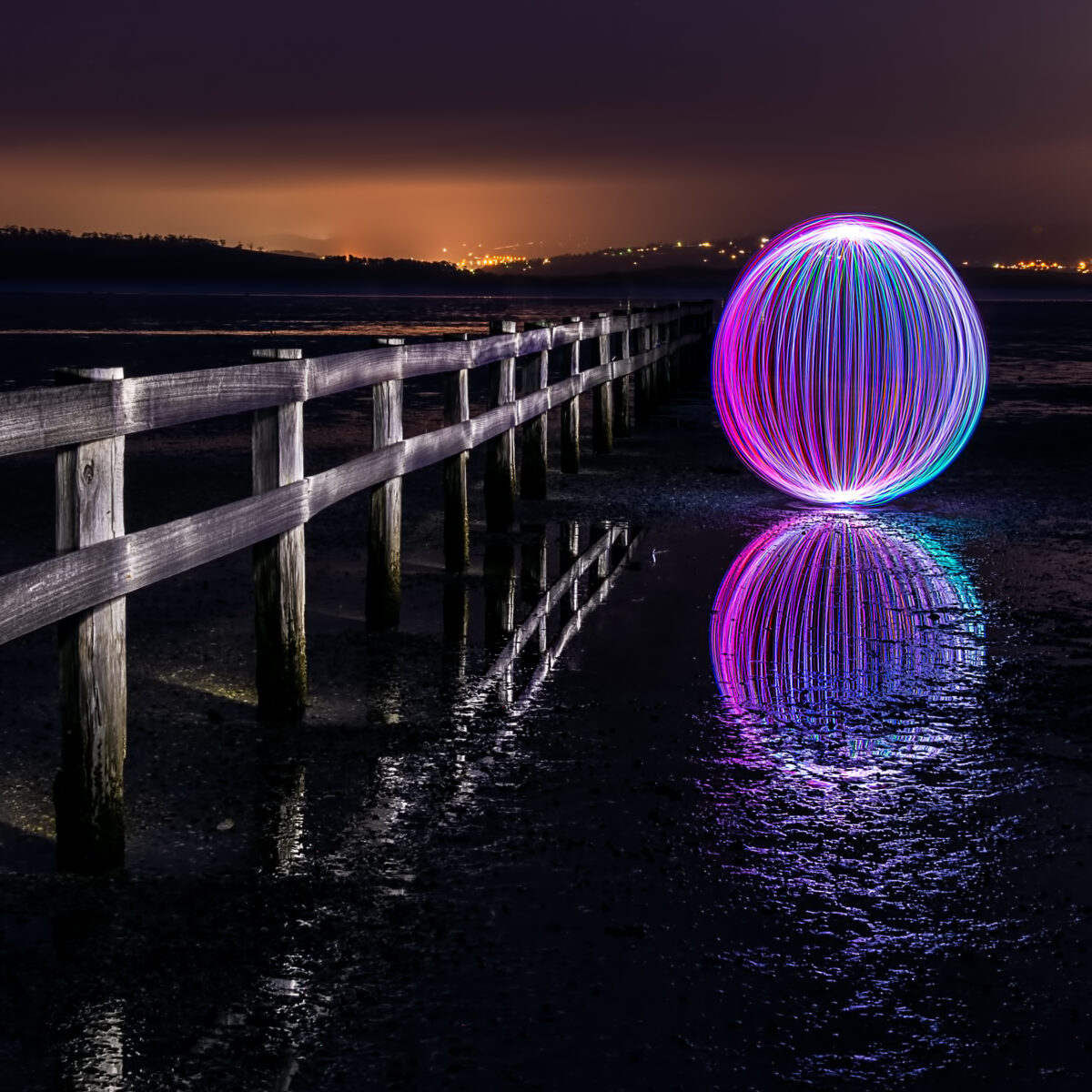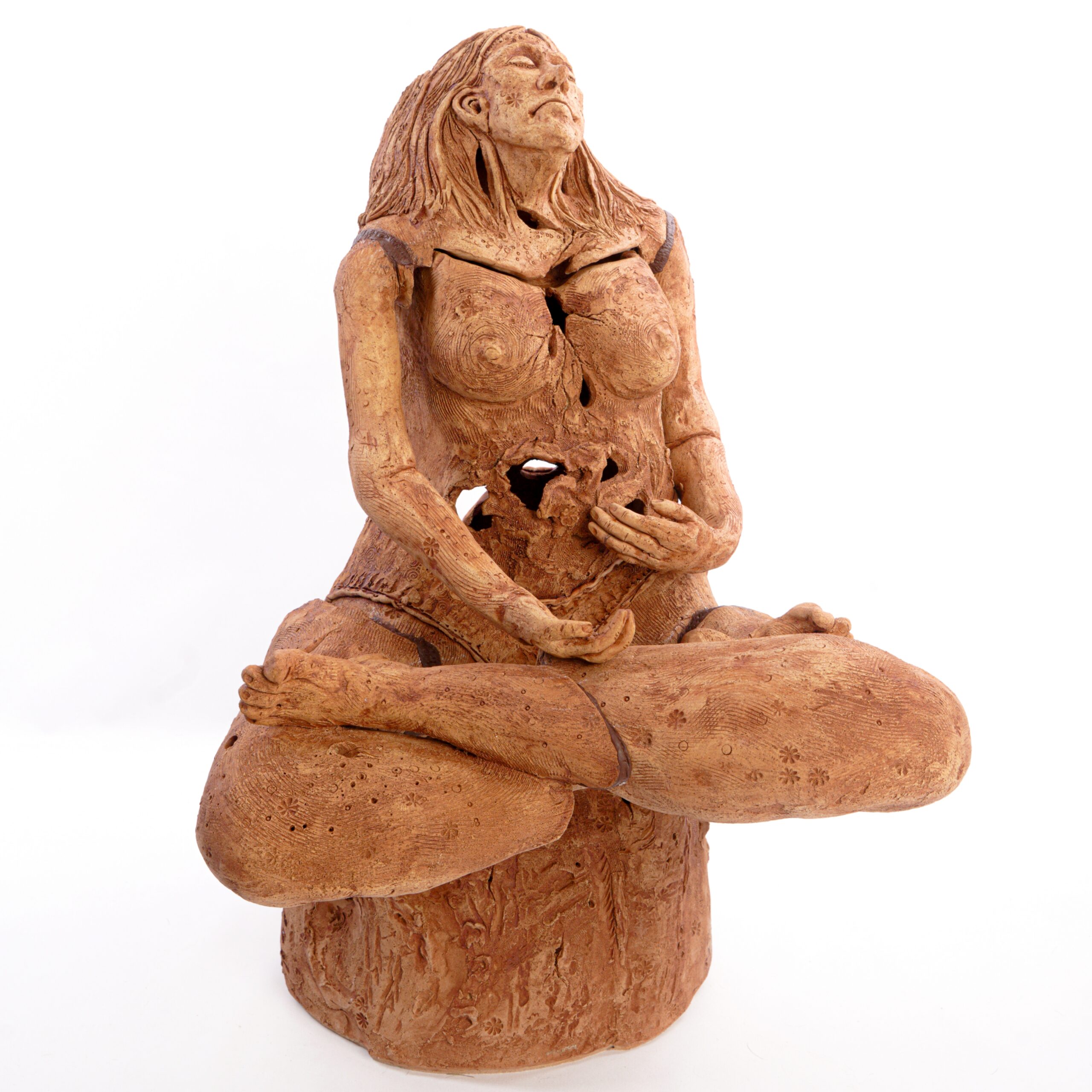Event Type: Free


A peek at the many ways metal can be transformed when clever hands are let loose with hammers (and other tools).
Hammer and Hand is an icon of Salamanca; a metal worker’s collective which has been supporting emerging jewellers and blacksmiths, many straight from art school or TAFE, since its conception in 1995. Having seen 50 or so members over the years, it continues to be a crucible of intriguing, beautifully conceived and constructed, locally hand made objects, to wear, use or simply enjoy in your space.


“The World of Words” stands as an embodiment of cultural pride, an effort to share the wisdom and beauty of Islamic art with the world. Through Halima’s vision, we are encouraged to see beyond preconceived notions, to appreciate the art form for its inherent grace and significance.
In the realm of Halima’s artistic prowess, the canvas becomes a portal to a mesmerizing world – “The World of Words.” Through her exquisite Arabic calligraphy artworks, Halima extends an invitation to all, beckoning them to explore a universe inspired by ancient Islamic art. This series transcends mere visual aesthetics; it is a profound journey into the depths of meaningful words, each stroke echoing as a silent whisper of the soul.
Halima’s inspiration draws from the rich tapestry of Islamic art, breathing new life into a centuries-old tradition. The result is more than just visually stunning; it is an immersive experience, where words become vessels of profound meaning and beauty. In a world saturated with noise, “The World of Words” stands as a sanctuary for contemplation, a space where one can listen to the silent echoes of the heart.
The series is a testament to Halima’s commitment to unravelling the intrinsic beauty of Islamic art. Beyond the brushstrokes, she weaves a narrative that defies stereotypes and challenges misconceptions. Each carefully crafted word becomes a bridge between cultures, inviting a global audience to appreciate the elegance and depth found within Arabic calligraphy.
As the ink flows, so does a river of wisdom, carrying with it the heritage and cultural significance of Islamic art. Halima’s artistic odyssey is not merely about creating beautiful visuals; it is a conscious effort to share the soulful whispers embedded in each word. Through her work, she endeavors to dismantle stigmas associated with Muslims and Islamic art, replacing them with a celebration of the profound messages encapsulated within her creations.
In a world hungry for connection and understanding, “The World of Words” emerges as a beacon, offering a space where diversity is not only acknowledged but celebrated. Halima’s art transcends boundaries, fostering a deeper appreciation for the universal language embedded in Arabic calligraphy.
Step into the enchanting world Halima has crafted, where each word is a doorway to a cultural legacy and a testament to the power of art in breaking barriers. It is an artistic odyssey that encourages us to not only witness but immerse ourselves in the beauty of “The World of Words.”
PLEASE NOTE our lift is currently undergoing maintenance and repairs. Wheelchair access to levels 2 and 3 of the arts centre is currently unavailable.


Rebecca Coote, Denise Hallett and Ange Cooper are three artists who share an unwavering passion for the Tasmanian landscape and yet, in dealing with the same concept, their work and perspective of the landscape is very different.
For a number of years Rebecca Coote, Denise Hallett and Ange Cooper have been printmaking together on a weekly basis at a community run (based) studio and sharing ideas about their work. They realised that, although their work is quite different, the landscape is their major concern and inspiration for them all.
The connection each artist has to their surrounding environment has been ever present over the years and articulated through their art practice in both printmaking and painting.
All three artists have their own personal encounters in the landscape and seek to demonstrate their responses by creating works that embrace these strong connections. Their intense reactions to a place or objects in nature are recorded through their observations by drawing, photographing and sometimes plein air painting. This gathered information is taken back to their own studios and expanded upon.
Rebecca Coote is very much influenced by her local setting and investigates the feeling and essence of a landscape through the use of colour.
Denise Hallett approaches her artwork with overtones of surrealism and evokes a sense of conflict between the urban interface encroaching on the natural environment.
Ange Cooper having recently moved from the city is now in a place surrounded by nature, wildlife and birds galore. The colour, fullness and vitality of this work reflects her love and appreciation for this haven she now lives in.
All three artists share an unwavering passion for the Tasmanian landscape and yet, in dealing with the same concept, their work and perspective of the landscape is very different.
Rebecca, Denise and Ange would love to share their most recent body of work consisting predominantly of painting with some printmaking to a much wider audience for all to enjoy.

Daily opening times:
March 12 – 19, 2024
Monday – Friday 10am – 5pm
Variations to Daily Opening Times:
Sunday 10am – 3pm
Earth Down, delves into language and symbolism inherent in nature, exploring narratives that reflect our human quest for answers and signs within the natural world.
Collages are created by combining handmade textures, found materials and digital elements.
I am inspired by the imperfect beauty of natural forms and often search for their border, their boundary.
These artworks serve as inquiries, reflections and expressions of connection—a longing to look outside to make sense of the inside.


Opening event:
Friday 8 March 2024, 6pm – 8pm
A duo show of cityscapes expressing silent order vs jazz like improvisation.
Oil painters Greg Ferry and George Kennedy present their latest cityscapes, demonstrating their opposing approaches to painting.
Greg Ferry’s field sketches lean towards tonalism and muted colour with rooftops and buildings that give a sense of the relentless drumbeat of time. They are quiet and contemplative works.
On a different polarity are George Kennedy’s works. Abstractions conveying an energy and randomness of line and succulent colour that one senses when encountering suburbia.
A refreshing duo show juxtopositioning silent order and jazz like improvisation.

Opening Event : Thursday 21 March 2024, 5:30pm – 7:30pm
Daily opening times :
Friday 22 March – Wednesday 3 April 2024
10:00am – 4:00pm daily (including Easter)
Horizon by Hannah Blackmore is a collection of abstract minimalist paintings focusing on the relationship between colours found in the Tasmanian landscape.
“Sometimes the horizon is the only recognisable feature in an abstract painting. It divides the coast from the sky, the ocean from the sky, and the trees from the sky. In this exhibition, I have taken colours from the Tasmanian coast and central landscape and looked at the relationship between them.
With nature as my guide, which colours work best together, and how do they make me feel? I love dark storm skies and pale milky seas. I love warm tree bark against sage blue eucalyptus leaves. I love the navy, white and turquoise found in a raging sea. Pops of colour in a landscape of subdued tones.
This collection of work focuses heavily on colour and texture. Using plaster raised with paint, I create backdrops for my paintings, scratching in lines and making shapes to create another layer of interest. Sometimes the horizon is hidden, under a low cloud or sea mist above the ocean, under the trees or over the hills. But it always exists and is the one constant in an ever-changing and evolving landscape.”
– Hannah Blackmore


Trees are inextricably entwined with life, producing oxygen, fruit, storing carbon, giving shelter, providing timber and bringing beauty into our world. I hope that these images will cause the viewer to look again at trees of the field, as they reach heavenward as if in worship.
A series of oil paintings by Ron Wilson
You will live in joy and peace. The mountains and hills will burst into song, and the trees of the field will clap their hands! (Isaiah 55:12). This metaphor of nature rejoicing is the inspiration for this series of images. The 24 representational oil paintings are supported by 15 small watercolour sketches.
I have always loved trees since boyhood – walking to school in a leafy Melbourne suburb, down two avenues, one lined with oaks and the other with flowering gums. At primary school, above the blackboard, hung a reproduction of the first painting I ever really noticed and have never forgotten. Every day I looked at the white gums of Australia’s heart, painted by Albert Namatjira, against a blue sky and folded hills. I wanted to paint.
My teenage years were spent in the Mallee, the land of little trees. I was fascinated by these hardy trees with their large roots and the birds they attracted. A houseboat trip on the Murray River was a love affair with the gnarled river red gums. When visiting Alice Springs in the red centre, I was struck by the gums growing in dry river beds and the survivors in the desert itself. Now, I often walk the Soldier’s walk on the Queen’s Domain where 520 trees are planted in remembrance of young Tasmanians who lost their lives in Europe in World War 1. While their bodies are interred in faraway places, evergreen trees, cypresses and cedars, from the northern hemisphere have been planted here in an otherwise Australian landscape.
In my front yard is a sixty-year-old red-flowering eucalyptus tree. When it flowers it is a blaze of orange-red, it is buzzing with bees and attracts parakeets and other birds. This is my ‘thank you’ tree; when I look at it I am filled with gratitude.
It is my hope that this exhibition will cause people to appreciate afresh the role trees play. Trees are inextricably entwined with life. They produce oxygen, fruit, use carbon dioxide, give shelter, provide timber and bring beauty into our world. I hope that these images will cause people to look again at trees, as they reach upwards and outwards as if in praise to their Creator.
PLEASE NOTE our lift is currently undergoing maintenance and repairs. Wheelchair access to levels 2 and 3 of the arts centre is currently unavailable.

Daily opening times:
Feb 21 – 26, 2024
10am – 6pm
This exhibition explores colour and light, as the foundations of photography, using diverse genres and themes.
Julie Moltmann’s primary photographic interest is in the built environment and the marks people make on the natural world. Julie is fascinated by the way natural light and shade interact with the rigid patterns and artificial colours of the built environment. These interactions have the potential to create moments of awareness and attentiveness in what is often an unremarkable, or even unappealing setting.
Ashlie Hill’s photographic interest can be explained by her interest in light and colour– both natural and artificial. Her photos explore how light interacts with objects and people in varying milieus. Ashlie explores how light, and colour, can be manipulated and how this impacts on both the subject of the photography, and the viewer. Ashlie also has an interest in exploring the possibilities of experimental and contemporary techniques both in camera and in post editing.


Opening event: Feb 29 – 5.30pm
Daily opening times:
Feb 28 – Mar 4, 2024
10am – 5pm
Variations to daily times:
Fri 1st March open 10am – 3pm
Mon 4th March open 10am – 12pm
Walk through various initiation life points with award winning, visual and ceramics, Tasmanian artist Lee-Anne Peters, as she takes you on a transformative journey of healing, depth, connection, sound and light.
Featuring Lee-Anne’s earthy and organically formed sculptures, characters and colourful paintings depicting transformation, healing, death, birth, ageing, fun and mystery.
Journey in, and be greeted by a line of Lee-Anne’s popular and fun Dragon Character Jars.
The Dragons are a symbol of initiation as they are the keepers and guardians of this ‘rite of passage’ into the unknown.
The back area of the gallery will feature Lee-Anne’s brilliantly white porcelain ‘hanging curtain’ – resembling bones as well as flowers, seed pods, twists and turns.
Gently part this curtain with great sacredness, and enter into the quiet and dimly lit area featuring Lee-Anne’s major exhibition work. It’s a very large floor lamp called: ‘Light Shining from Within (Lamp)’.
This is a large sculpture of a lady, formerly broken into pieces and assembled with cracks, gaps and crevices shining light outward in patterns that dance across the room. She is a symbol of light, renewal, recovery, hope and strength.
You’ll also discover: thought-provoking paintings, an indoor water feature, ‘grandmother flower pot and vase’ collection, flowing forms, inspiring cups and other unique and surprising creations.
Lee-Anne has been preparing works for this exhibition for almost seven months, and during that time has dived into the challenges and opportunities of personal matters (which are reflected in her works) on: surrendering, taking a leap of faith, ageing, preparing for death and the actual passing of her grandmother, change, transformation, and self-exploration. Everything within this exhibition has manifested from Lee-Anne’s willingness to see herself, her life and the stages of life as openly and honestly as she can.
We trust that you enjoy participating and journeying inward during the showing of ‘Inititation: into the unknown.’
Lee-Anne will be creating a large sculptural form during the duration of this exhibition.


